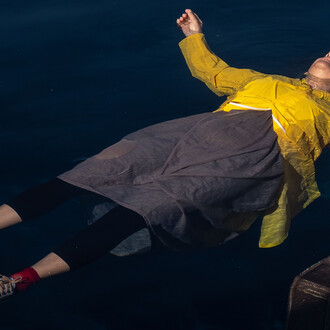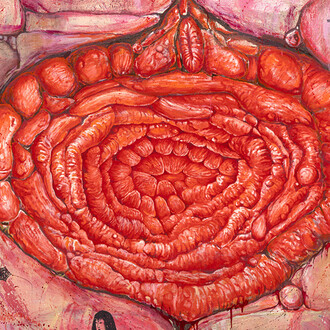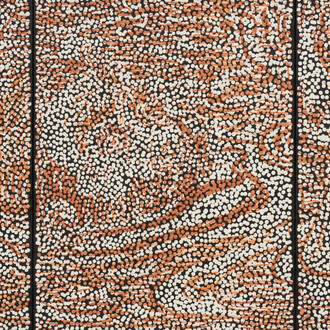For over thirty years, Lee Bae has introduced Korean painting to the international stage through the use of charcoal as a medium and monochromatic, calligraphic abstraction. After moving to France in 1989, he began using charcoal—familiar to Koreans instead of Western art materials—in his works. His art is built upon the inherent concepts of life and death, cycles and sharing, with his distinct artistic imagination layered atop. Through drawing, canvas, and installation, he has expanded his practice. Notable series include Issu du feu, where he densely arranged and joined cut charcoal pieces on canvas, then polished the surface; the thick Landscape works made by compressing charcoal powder into the medium; Acrylic Medium, in which he paints forms with ink extracted from charcoal and repeatedly coats them with wax-like substances; Brushstroke, which uses charcoal-powder-mixed ink to preserve expressive brush movements; and sculptural series presenting charcoal itself or in bronze. He explains his use of charcoal by its embodiment of vast natural forces beyond human control.
Lee has participated in numerous exhibitions including the Venice Biennale, the Rockefeller Center’s Channel Gardens in New York, the Musée Guimet in France, the Pernéva Blanca Foundation, Daegu Art Museum, the Musée d’Art Contemporain de Saint-Étienne, and the Today Art Museum in Beijing. He was awarded the National Museum of Modern and Contemporary Art’s “Artist of the Year Award” in 2000, followed by the Paris Korea Cultural Center Artist Award in 2009, the Korea Art Critics Association Artist Award in 2013, and was granted the French Order of Arts and Letters (Chevalier) in 2018. In 2023, he received the Republic of Korea’s Culture and Arts Award. His works are in prominent collections including the National Museum of Modern and Contemporary Art (Korea), Seoul Museum of Art, Leeum Samsung Museum of Art, Mag Foundation, Musée Guimet (Paris), Fundación Privada Allegro (Spain), and the Baru Foundation.
Over the course of more than thirty years, Kim Taek‑Sang has experimented with the medium of water—exploring diffusion, deposition, and layering of pigment. His repeated process of pouring a minimal amount of pigment-infused water onto canvas laid flat and allowing it to dry reveals a practicing, healing aesthetic—a “careful aesthetic.” Successive layering creates subtle interstices that scatter light, resulting in depth and density. His paintings display soft, understated hues reminiscent of nature’s own coloration. He terms his practice damhwa (淡畵), meaning "water-color painting." His early work in the 1990s included socio-political messages; a transformative moment came from being captivated by the water of Yellowstone’s volcanic crater. Since then, he has incorporated natural elements—water, air, light, gravity—into his studio practice, forging a distinctive sculptural language that bridges materiality, sensibility, concept, and nature. His works, characterized by barely perceptible resonance and vibrational light, have evolved within the tradition of monochrome painting while also offering a subtle inquiry into the relationships between nature and humanity, medium and perception. Taek‑sang holds a BFA from Chung‑Ang University and an MFA in Western painting from Hongik University. His work is included in major collections such as the National Museum of Modern and Contemporary Art (Korea), KUMHO Museum of Art, Leeum Samsung Museum of Art, and Suwon I‑Park Museum of Art.
A leader of the Japanese Mono-ha movement, Kishio Suga works by arranging natural and industrial materials—wood, metal, stone, paper, rope, concrete, wax, and vinyl—untouched, within space. His practice mediates the interstitial zones between object and object, and between object and space, creating a fluid relational experience beyond conventional genres like painting or sculpture. Suga studied at Tama Art University in Tokyo from 1964 to 1968, and alongside peers such as Nobuo Sekine and Jiro Takamatsu—who were influenced by Arte Povera and Land Art—he helped found Mono-ha. Shortly after graduation, he began creating temporary compositions using natural materials in outdoor Tokyo settings, a practice he called “fieldwork.” Later, he brought these works indoors, earning recognition with unprecedented installations such as the wax totem Parallel Strata (1969) and the square form of four vertical steel plates titled Soft Concrete (1970). He has exhibited at the eighth Paris Biennale, the 38th and 57th Venice Biennales, and in major museums worldwide, including the Centre Pompidou (Paris), the Guggenheim Museum (New York), SFMoMA, MoMA, and Punta della Dogana (Venice). Recently, he held solo exhibitions at Dia: Chelsea (New York) and Pirelli HangarBicocca (Milan). His work resides in prominent public and private collections internationally.
Lee Gwang‑Ho transforms everyday subjects into a unique visual language that goes beyond representational depiction. His deeply labor-intensive, almost obsessive realism reconfigures reality within his own conceptual framework. Subjects portrayed with intensity and drama reveal inner desires and even engage the viewer’s tactile sense. The hyper-detailed rendering of familiar subjects often results in a sense of strangeness—as though they are being seen for the first time. While familiarity can erase meaning, Gwang‑ho seems to understand how to invert that familiarity, akin to flipping an hourglass. He has held solo exhibitions at Cho Hyun Gallery in Busan, International Gallery in Seoul, and Changdong Studio Gallery in Seoul and participated in group exhibitions at Seoul Museum of Art, Busan Museum of Art, Gana Art Center (Seoul), and Saatchi Gallery (London). His works are held in major domestic and international collections, including the National Museum of Modern and Contemporary Art (Korea), Seoul Museum of Art, Gyeonggi Museum of Art, Jeju Museum of Art, and POSCO Art Museum.
















